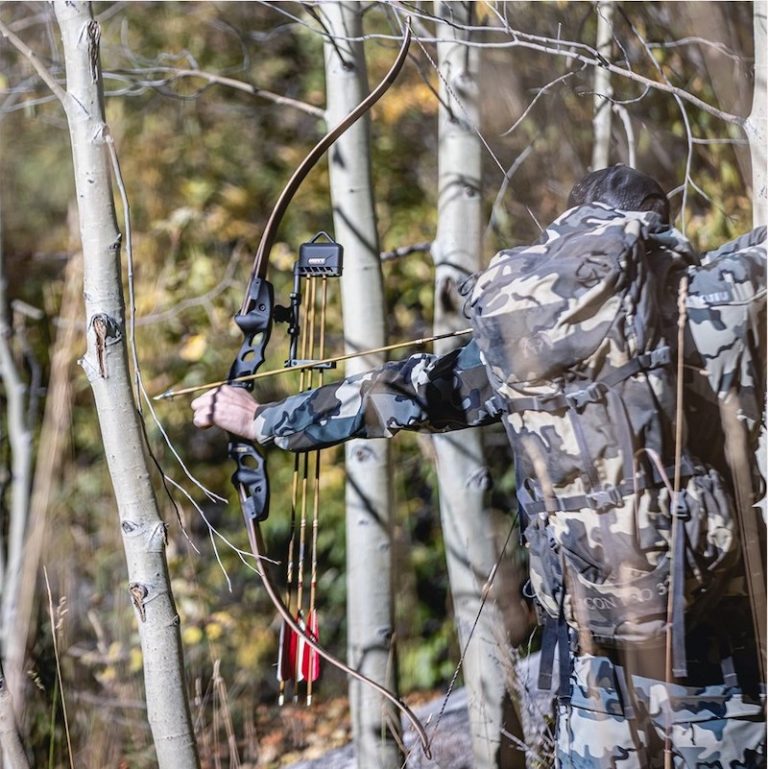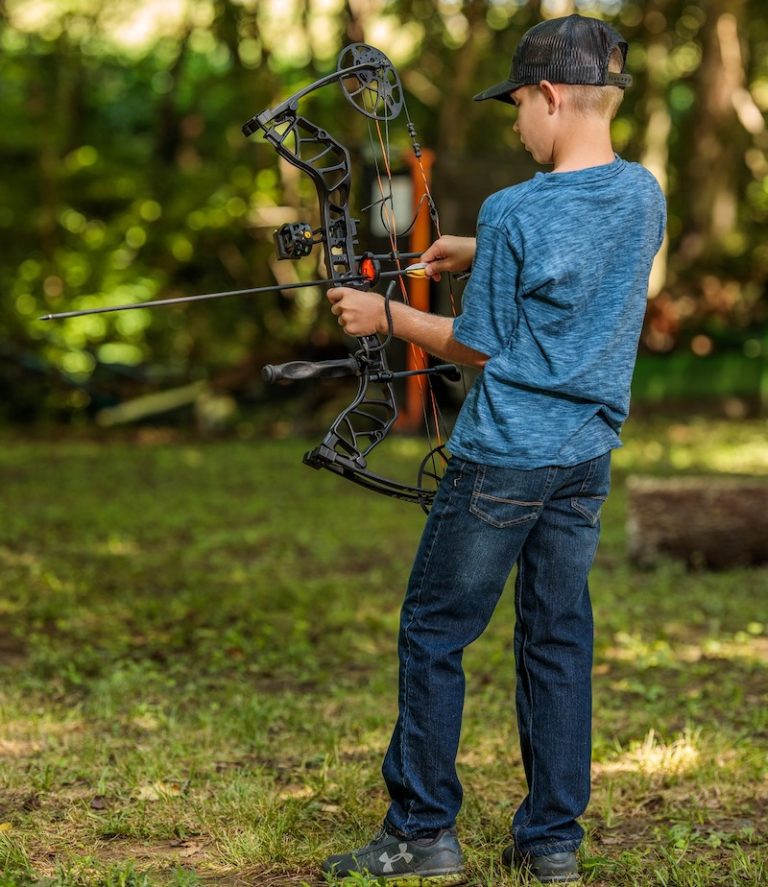Marketing
Marketing Tips for Every Bow
These marketing tips for traditional bows, compound bows and crossbows can jump-start sales and boost customer satisfaction.
Photo Credit: ATA
With hundreds of bows on the market, some customers struggle to find the best fit for them. Understanding your customers and how to market each type of bow helps boost sales and customer satisfaction.
We asked three marketing specialists for their best tips for selling traditional bows, compound bows and crossbows. Let’s meet your experts:
- Traditional bows: Jeremy Eldredge, marketing manager, Hoyt Archery Inc.
- Compound bows: Alec Wyman, marketing manager, Bear Archery
- Crossbows: Brian Flaherty, marketing manager, TenPoint Crossbow Technologies
All three experts emphasize knowing everything possible about your customers and bows. Who makes each model, how do they work, where are they manufactured?
“If you understand what a customer needs and is looking for, and you know your products well enough to match their needs, you’ll have a better chance of closing the sale,” Eldredge said. “If you’re making stuff up and faking your way through the sales experience, customers will see through you, or you’ll sell them something they didn’t want or need. When they figure that out later, they’ll never come back."
Show customers their options, but too many options might confuse them. You want them to enjoy the sales experience and feel productive. Be genuine when marketing your products. If you’re confident and knowledgeable, your customers will trust your expertise, which can trigger more sales and future interactions.

Traditional bows are easy to maintain. Photo Credit: Hoyt
Typical Buyers:
- Hunters who find compound bows boring or too easy, and want something different.
- Hunters who are “diehard traditional” and love the “stick-bow” challenge.
- Hunters fascinated by the history and romance of traditional bows.
Traditional bows require lots of practice to shoot consistently. That might put off new archers, but many longtime archers enjoy the challenge of traditional bows.
Best Features: Eldredge considers traditional bows pure and simple compared to other bows. They don’t necessarily require a sight, stabilizer or arrow rest. Therefore, they don’t need much maintenance, except for the bowstring. That makes traditional bows hardy and reliable.
Marketing Tip: Keep a traditional bow on hand for customers to try. Eldredge said “trad bows” aren’t as common as compounds, so few customers have tried shooting one. That means people don’t know what they’re missing. Eldredge said most people who try shooting a traditional bow enjoy the challenge and get hooked. Encourage customers to test drive different bows. It lets them experience different features, and helps them discover what they like most. Be sure to show customers their options. They can shoot a basic wooden bow, or a modern metal-riser bow with an elevated rest and carbon limbs. Remind customers they can get as involved in archery’s technical side as they want.
Another Consideration: Unlike compound bows, the traditional bow’s entire draw weight must be pulled and held throughout the shot process. Discuss these bows’ strength and stamina requirements with customers, and stock bows of multiple lengths and low draw weights. A variety helps beginners choose the right bow, and develop good form and avoid bad habits while learning to draw, hold and shoot.

Compound bows are a natural gateway to competing in 3D archery tournaments. Photo Credit: Bear Archery
Typical Buyers:
- Young people who want to shoot 3D or target archery.
- Outdoorsmen and women who want to start bowhunting.
- Bowhunters who want to upgrade their setup or introduce friends and family to bowhunting.
Wyman said programs like National Archery in the Schools and Scholastic 3D Archery often steer young archers toward compound bows. Those programs help beginners learn archery’s history and traditions. Likewise, current bowhunters tend to steer friends and family toward compound bows when taking up bowhunting.
Best Features: Wyman said a compound bow’s speed, axle-to-axle length, and overall weight help it appeal to individual customers. Cams play a vital role in each compound’s speed, let-off, and draw length. They also affect each bow’s tuning and draw cycle, and how it feels when drawn. Design and technology are the biggest differences among bow companies. A bow’s quality affects its feel, which is usually a deciding factor for buyers.
Marketing Tip: Manufacturers strive to market new bows and accessories in ways that emphasize the product’s look, innovations, effectiveness, and reputation. “It’s incredibly important to educate and inform audiences of the bow’s functional, data-driven features so they know why it was designed and introduced,” Wyman said. “By balancing the look and appeal with details and data, you have twice the opportunity to appeal to many audiences.”
Another Consideration: When marketing a compound bow, never forget the user’s goals. Compounds are most popular for hunting and target archery in the U.S. “The bow’s end use is a vital piece of the purchasing process,” Wyman said. “Retailers must know the bows they offer, while also understanding the consumer’s goals. Is the bow for hunting, target archery, or a bit of both?”
Marketing the right bow to the right archer saves everyone time, and increases conversion rates. Wyman also suggests retailers use their website and social media to connect with customers. “When retailers make information accessible through their website and social marketing, it makes them more credible, trusted, and easier to work with from a consumer perspective,” he said.

Crossbows are a great bow for anyone that has trouble pulling the draw weight necessary for bowhunting with a vertical bow. Photo Credit: TenPoint Crossbow Technologies
Typical Buyers:
- People who lack the strength to pull a vertical bow but want to start bowhunting.
- People who lack time to practice regularly with a vertical bow.
- People with limited physical abilities because of age, injury or other challenges.
- People and gun hunters seeking more seasons and hunting opportunities.
Crossbows have become more popular the past decade, and the COVID-19 pandemic increased hunting participation nationwide. Crossbows saw huge growth in 2020, especially because many states offer long deer seasons.
Best Features: Flaherty said crossbows are safe and accurate. TenPoint and Wicked Ridge Crossbows are sighted in at the factory, which helps buyers shoot well their first try. “The crossbow’s major advantages are its easy use and out-of-the-box accuracy,” Flaherty said. “Unlike other bows, the crossbow doesn’t require weeks of practice to be proficient.” The company also makes safety its priority, and works to create family-friendly products. Cocking devices, for example, let hunters of all ages and abilities easily draw and cock crossbows.
Marketing Tip: If a customer doesn’t specify a price range, show them high-end crossbows and work your way down. “Never assume what someone walking through the door can afford,” Flaherty said. “If you do, you’ll sell the customer – and yourself – short. Pick a $2,500 bow and explain its technology, features and benefits. The customer will guide you to their comfort zone. It’s easier and more lucrative to ‘sell down’ based on feedback than to ‘sell up’ after starting with an economy crossbow.”
Another Consideration: Flaherty said crossbows are legal in some fashion in most states during big-game archery seasons. Some states let all bowhunters use them, while other states only allow older or disabled hunters use them. Flaherty suggests retailers casually mention their state’s crossbow regulations when working with customers. Retailers should also encourage customers to check the state’s hunting regulations to confirm what they hear. TenPoint provides each state’s regulations on its website. The company updates the information regularly, but confirm the facts with your state wildlife agency.
You aren’t alone in the sales process. Wyman said Bear Archery works to inform and educate dealers about its products to ensure success. Most companies do the same. Reach out with questions. Sales representatives can answer you, provide marketing tips, and offer training.
Understanding your customers and matching them with products are the keys to successful marketing. Each person’s pathway is unique, as are their equipment preferences. Learn your customers’ goals, desires and budget to match them with suitable products.
- Bowhunting in the United States: A Market Study
The ATA studied the archery market in 2017 to help its members learn more about it. The study compares opinions on bowhunting with other outdoor activities. It also studied the preferences and buying habits for three generations of archers and bowhunters. The study’s data can improve sales strategies and generate more income.
ATA members can download a copy of the study for free in the ATA Store. You can also read the ATA’s article “Survey Results: Bow Preferences and Buying Habits for Three Generations” to learn the study’s important findings and highlights.
- Article: Help Customers Buy Their First Bow
This ATA article discusses how to work with new archers and first-time bow buyers. Learn how to greet customers, choose and ask questions, and help them “test drive” the equipment. How do they decide which accessories and add-ons they need, and how should you close the sale? You’ll also receive five tips for improving sales strategies. The article includes links to three other ArcheryTrade.org articles about sales and selling.
- How to Help Customers Buy Their First Bow
- Get More Sales: Master the Art of Selling
- How to Read Your Customer’s Facial Expressions to Generate More Sales (with Emojis)
- Don’t Just Stock Products, Sell Them!
If you have questions or need more information, please contact Nicole Nash, ATA’s range and retail-programs manager, at (502) 640-0944 or nicolenash@archerytrade.org.

WE ARE HERE TO HELP THE INDUSTRY, TO HELP INDIVIDUAL BUSINESSES GET THE MOST OUT OF THE INDUSTRY, AND TO HELP YOU.